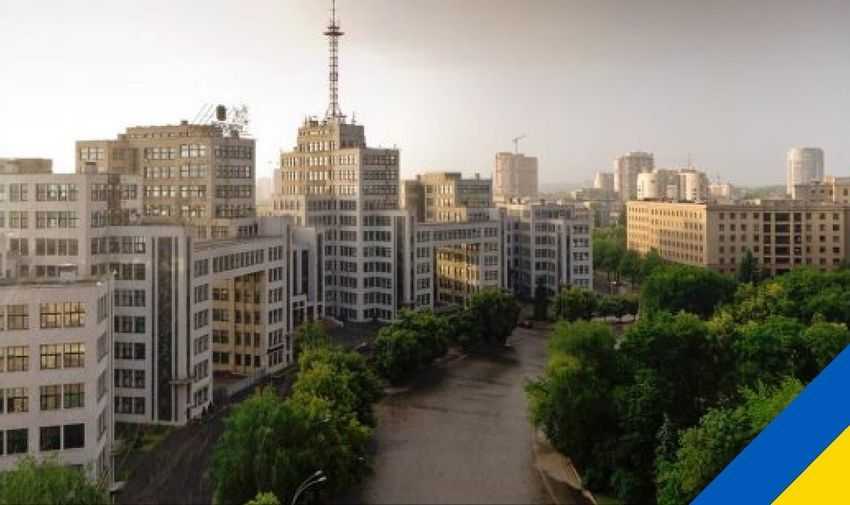Home>“During war, architecture becomes an object of international politics”

28.06.2022
“During war, architecture becomes an object of international politics”
How to protect a country’s architectural heritage when war rages? From Palmyra to Timbuktu, the question has tragically been raised many times – and it arises again in the context of Russia’s war in Ukraine. As the conflict enters its fourth month, the Paris School of International Affairs (PSIA) and the Urban School of Sciences Po co-hosted a discussion on Thursday 23 June, with leading Ukrainian architect and scholar, and co-founder of the Urban Forms Center in Kharkiv, Ievgeniia Gubkina, and the Director of the Culture and Emergencies entity at UNESCO, Krista Pikkat.
Since the Euro Maidan revolution in 2014, Ukraine has become a beacon for grass-roots experiments in Soviet heritage conservation. A nation-wide discussion emerged about architecture as a vehicle for debating conflicting memories, nationhood, citizenship, corruption and new art forms. Modernist buildings became popular places for both domestic and international artists to create, for local counterculture to flourish, and for grass-roots democratisation and Europeanisation to advance.
Heritage as a target of war
But Ukrainian culture has been one of the targets of Vladimir Putin since 2014, highlighted PSIA Dean Arancha Gonzalez in her introduction of the conference. Despite international law in place to protect this heritage, it is targeted directly with the intention to undermine identities and to destroy the civilization behind it.
“Each fourth building in Kharkiv is totally demolished,” Ievgeniia Gubkina explained. The 1.4 million people city, where Gubkina lives and co-founded the NGO Urban Forms Center, is every day under shelling and bombing, and the damage is almost incomprehensible: “For years I researched Soviet modernism. I wrote a book about Kharkiv architecture and sent it to my publisher months before the war started,” she said: “one-fourth of all the objects included in my book are demolished now”.
"The war became the main link between architecture and human suffering”
Paradoxically, it is sometimes through war that people start to understand buildings and architecture as part of their heritage. “We should see the heritage of the 20th century as significant in value,” Gubkina argued, showing several monuments of her hometown on the screen: Freedom Square, the former heart of Soviet power in Ukraine ; the first skyscraper of the Soviet Union, built in 1925 …
“Architecture is not just walls, architecture is people. Human lives,” she said. Through the countless images of destruction in Ukrainian cities, the war “became the main link between architecture and human suffering”. And these repeated photos, in the fourth month of the war, raise the heartfelt question: “Are our cities as important as European cities, our culture and our lives as important as yours?”.
Concluding her presentation, Gubkina outlined three main action points. Firstly, an emergency inclusion of some buildings on the UNESCO Heritage List would “show Kharkivites and Ukrainians that their cities, culture and history are important parts of the world”. Secondly, providing Ukraine with heavy weapons and defense systems – “otherwise there will be no Ukrainians and no Ukrainian culture”. And finally, preparing, along with UNESCO, a case of heritage destruction to present in front of the International Criminal Court as soon as possible. “During war, architecture becomes an object of international politics: it is a moment of choice of what our common values are,” she concluded.
Watch the replay of the conference
From damage assessment to “an exceptional effort” of reconstruction
Krista Pikkat, Director of the Culture and Emergencies entity at UNESCO, highlighted the work her organization is doing to assist in protecting Ukrainian culture and heritage during this war. Before the eruption of the conflict, the country had seven properties on the World Heritage List, and 14 submitted by the government on the tentative list. UNESCO is now supporting damage assessment and data collection, including through satellite monitoring, and has verified damage to 152 sites across the country: religious sites, museums, libraries …
“Heritage is sometimes specifically targeted for what it represents: it is what allows us to create meaning, to build communities, to tell a more nuanced, complex story, that does not oppose but unites us,” Pikkat explained.
UNESCO has also been coordinating with national and international organisations, including some of the world’s most renowned museums, to propose preventative measures and prepare for future large-scale reconstruction plans. “Reconstruction will require an exceptional effort. This is an effort that the international community must support,” Pikkat stated. A belief reflected by all the participants in the discussion: Arancha Gonzalez highlighted how the Sciences Po community should already think about how to mobilize for the rebuilding of Ukrainian heritage.
Beyond the war in Ukraine, the current situation tragically underlines the vital need to prepare preventative measures in times of peace, from awareness-raising to inventories of heritage, Pikkat insisted. Before concluding: “We are all part of the solution: the heritage of the past generations is a legacy that we must preserve – it is a necessary condition of our humanity.”
Watch the interview of Ievgeniia Gubkina as part of the PAUSE programme
Read more:
Cover image caption: The Derzhprom Building in Kharkiv, Ukraine (credits: © Paul Itkin)
Open house days 2026

Virtual Undergraduate Open House day 2026
Come meet our teams and students at our campuses.
Virtual Graduate Open House day 2026
Meet faculty members, students and representatives and learn more about our 30 Master's programmes.